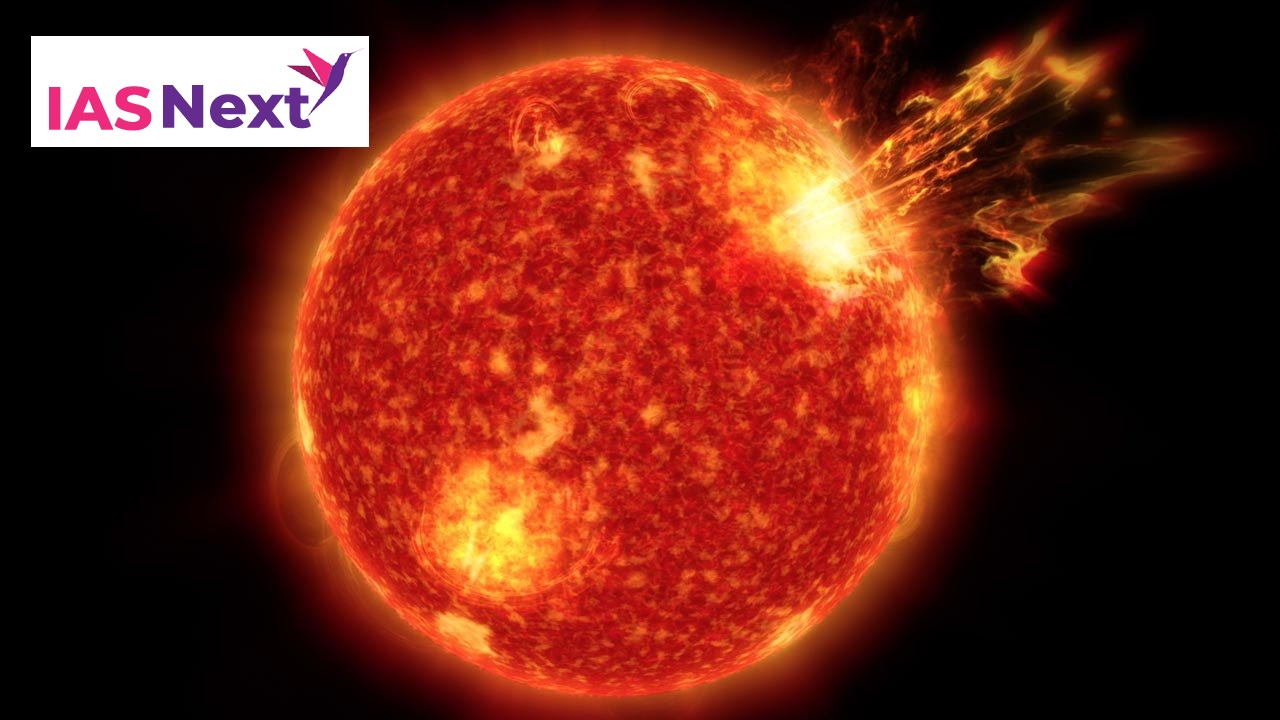CURRENT AFFAIRS
Get the most updated and recent current affair content on Padhaikaro.com
What is Solar Storms?
- IAS NEXT, Lucknow
- 26, Mar 2022

What are solar storms?
- Just as the sun keeps sending us light and heat, it also throws out a lot of other material in all directions, including towards Earth.
- In fact, there is a constant stream of charged particles — electrons and protons — that escape from the sun’s atmosphere (corona) and spread across space. This stream is called ‘solar wind’.
- We are protected from the solar wind by our magnetic field, which deflects the particles away.
What is Coronal Mass Ejection?
- Sometimes, a bubble of gas gets burped out of the sun. Imagine it like a bubble escaping from a bucket of soap water.
- This bubble, typically containing billions of tonnes of matter, ploughs through the solar wind and travels in a random direction at a speed of several million kilometers per hour.
- Such a bubble that has cut loose from the sun’s corona is called ‘coronal mass ejection’ (CME) or ‘solar storm’.
- If a CME happens to be coming in the direction of the earth, it is a cause for concern.
- Scientists says that it has been known for some time that the sun undergoes cycles of high (maxima) and low (minima) CME activity. Right now, there is an upswing and it will reach a maximum in a few years.
Why do they happen?
- Just as sparks flying out of a bonfire, matter getting ejected from the sun is a common phenomenon.
- It is as natural as water particles getting flung out of a spinning, wet tennis ball.
- The sun is spinning fast and this spin creates complex swirls and eddies. Sometimes matter gets engulfed in loops of the magnetic field, which gets ejected violently.
What will be the impact of solar storms?
- It all depends upon the individual solar storm.
- Usually, the earth’s magnetic field — magnetosphere — will ward off the dangerous incursions; the CME could pose danger only if the magnetic field is overwhelmed.
- The magnetic field, on the sun-facing side of the earth, extends to about 65,000 km, well within the range of earth’s satellites. (Actually, the magnetic field on the day side gets compressed to 65,000 km by the solar winds; on the night side, the magnetosphere is much bigger).
- If a big CME occurs, some satellites could be lost; there is nothing we can do about it.
- As for the earth-based systems, such as power grids and telecom networks, even if a big CME hits the earth, only countries in the upper and lower latitudes are in danger of getting affected. Being near the equator, India is relatively safe.
How big a problem is it?
- It depends upon the individual CME. Occasionally, a large solar storm might cut loose and hurl towards the earth; and we can do nothing about it.
- If we can predict it, we can reschedule satellite launches, but the CMEs are difficult to predict sufficiently ahead of their occurrence.
- A large solar storm hitting the earth might happen once in a century. The last big one was in 1859. The ‘Carrington Event’ shut down telegraph and electrical systems for many days.
- If an 1859-type of solar storm were to hit the earth today, the US alone could suffer damage of $2.6 trillion.